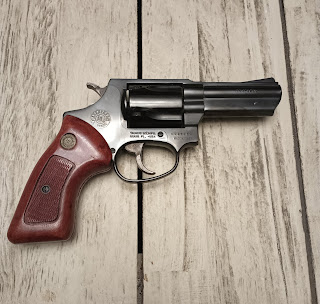Stalin, Mao, Communism, and their 21st Century Aftermath in Russia and China
Dr. Miguel A. Faria, Jr.
Cambridge Scholars Publishing
2024
Review written by Robert A. Waters
"To choose one's victims, to prepare one's plans minutely, to slake an implacable vengeance, and then go to bed...there is nothing sweeter in the world." Joseph StalinIn his far-sweeping book about communism, Dr. Miguel Faria, Jr. describes a hellish nightmare. Almost every page drips with the blood of victims, most unknown, but many high-ranking, or even famous. My thought at the end of the book was, who in his or her right mind would wish to live in such a society? And yet, many who thrive under freedom in today's world seem to have a yen for communistic-style governments.
So what is communism? Faria writes: "To paraphrase Mao Tse-tung, communism is the attainment of political power by the barrel of a gun and complete control of all services and the methods of production, distribution, and consumption of goods by the omnipotent state."
The oppressors and killers who rule totalitarian dictatorships care nothing for the people they rule. Joseph Stalin, an unredeemable psychopath, murdered or caused the deaths of at least 20-40 million of his own people. Mao Tse-tung also killed 20-40 million. (These staggering numbers are low--there were likely millions more unknown victims.)
Because he murdered friends and enemies alike, as well as millions of anonymous souls caught in his web, Faria calls Stalin's reign the "meat grinder." This is an apt description. The author writes that "Stalin would use terror indiscriminately as a matter of course, not only against the civilian population but also most ominously and unflinchingly against his former comrades, and without sparing the families of political opponents (including his own)."
Nickolai Yezhov, chief executioner for Stalin, is an example of what happened when an insider knew more than he should. Yezhov was no innocent: he may have been responsible for a half-million torture-murders orchestrated by the Russian dictator. But he ended up being labeled a "traitor" by Stalin and was dispatched with a bullet to the brain.
Maria A. Spiridonova (pictured above) suffered for decades at the hands of both Lenin and Stalin. In 1918, she criticized the Bolsheviks, saying, "I accuse you of betraying the peasants, of making use of them for your own ends." Faria writes, "Spiridonova was persecuted for years, arrested, harshly interrogated, released, resentenced repeatedly, sent to various labor camps and settlements in the Gulag and in exile. Finally, she was executed in 1941."
Life was not pleasant for most Russians.
Faria writes that Russian "citizens died from privations, neglect, and mistreatment; of starvation from government-orchestrated famines; diseases due to malnutrition; and mass executions or a simple shot to the back of the head. They died in prisons, in their homes, during mass deportations, and from overwork and exposure while slaving away in the Gulag system of destructive labor camps."
Arthur Koestler, a former communist and author of the anti-communist book, Darkness At Noon, wrote: "I went to Communism as one goes to a spring of fresh water and I left Communism as one clambers out of a poisoned river strewn with the wreckage of flooded cities and corpses of the drowned."
Communism in Russia was a total and complete disaster for its people. Faria has covered it all. From the well-known overthrow and murders of former Tsarist government officials, to the Great Purges, to rounding up and assassinating almost all the old Bolsheviks, to Stalin's brutal war on intellectuals and Russia's Jewish population, to his deliberate starving of millions of Ukrainians, and much more...the list of victims continues through Faria's book.
Years after communism in Russia failed, former President Boris Yeltsin said, "Our country has not been lucky...It was decided to carry out this Marxist experiment on us...It has simply pushed us off the path the world's civilized nations have taken...in the end, we proved that there is no place for this idea." (NOTE: my italics.)
Eastern-style communism under China's Mao Tse-tung was no better.
Faria writes that "Mao committed whatever crimes were necessary to attain and preserve supreme political power. For him, democracy, justice, equality, fraternity, and freedom were merely words to be used for propaganda purposes--not ideas to be pursued."
Anyone unfortunate enough to be born into a political system where one individual has complete power will be subjugated to the leader. That was true under Stalin, and true under Mao. Communism is an easy system for tyrants to manipulate.
The research done by Faria is amazing. In Stalin, Mao, Communism, and their 21st Century Aftermath in Russia and China, the author quotes from numerous works about Russian and Chinese history. He has published more than a hundred high-quality photos of many of the players involved. He has tied together disparate parts of a massive jigsaw puzzle of events and framed them into a terrifying whole. With so much going on in secretive societies such as Russia and China, that's hard to do.
After Mao won the Chinese civil war against President Chiang Kai-shek, he ruled as a ruthless dictator. Faria writes: "Tragically, the significant and historic events in communist China were not peaceful socio-economic advances, but militant initiatives begun by Chairman Mao to destroy the bourgeoisie, wipe out traditional mores, erase and rewrite Chinese history, and construct a fully self-sufficient communist state..."
Unfortunately, Mao's policies "only brought social upheaval and violence, economic disaster, devastation, suffering, and death."
Faria juxtaposes the former Chinese communist government with the current government. President Xi Jinping is slicker and craftier than Mao, but his goals remain much the same, i.e., domination of all who fall into his orbit.
Because of its historical significance, this book will find an audience. But will the modernists of our generation learn from the past? That, to me is the critical question.
If anyone has seen the true face of communism, it is Dr. Miguel A. Faria. He and his father barely escaped Fidel Castro's Cuba. He arrived in America and became a neurosurgeon. He has dedicated a vast portion of his life fighting to retain the freedoms we have in this country. Check out his website: https://haciendapublishing.com/





















